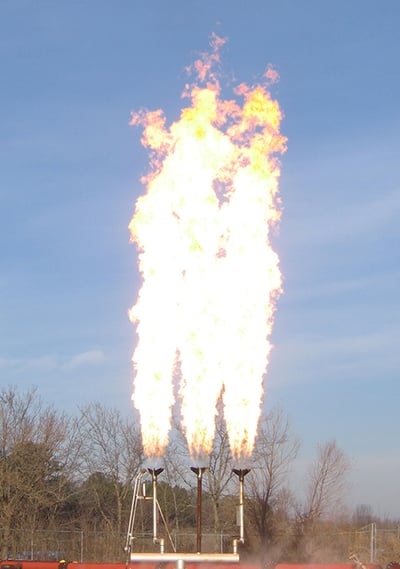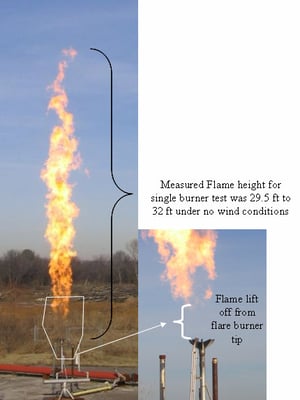使用ISIS-3D评估空气需求、火焰高度和来自低矮的火炬头的辐射

Low-profile flare fields pose significant design challenges including elongated flames, adequate air supply to burner tips located on inner rows and high radiation flux from the flame to the surrounding wind fence. Recent work completed by engineers at Alion Science and Technology for Zeeco, Inc. has focused on analyzing the performance of a proprietary burner tip used in large low profile gas flares having upwards of 400 burner tips packed together into a staged piping configuration surrounded by a specially designed wind fence. This paper presents results from the CFD analysis of this gas flare and illustrates the capability of the CFD tool to simulate soot formation, radiant flux, flame shape, and flame height for industrial scale lowprofile flare fields. This work was completed in conjunction with flare testing where ethylene was fired through the burner tips. Data collected during these flare tests included video, radiant flux, and sound. Test results were used to calibrate the combustion model and to validate CFD predictions of flame height and air demand. Based on this, predicted flame height and air demand were provided for two full flare field cases. In addition, estimates of radiant flux to the surrounding wind fence were provided.
INTRODUCTION
A series of calculations of flare performance have been made. The purpose of the calculations was to predict air demand under various conditions. In addition, the thermal radiation profile around the flare was also determined. The primary computational fluid dynamics (CFD) tool used in this analysis was ISIS-3D [1, 2, 3]. Previously, ISIS-3D has been used in a variety of pool fire analyses to predict package thermal performance [4]. More recently, ISIS-3D has been applied to flare analysis. In this application, new combustion models have been implemented for handling new fuel mixtures including propane and ethylene. The combustion and radiation models have been compared to flame size, shape, and radiation measurements measured during single-burner and multi-burner tests under no-wind and low-wind ambient conditions.
The CFD model included various details depending upon the case that was run. For a single burner case a computational domain of 6 m x 6 m x 30 m was selected. For a multi-burner case a domain size of 35 m x 35 m x 25 m was selected. For the full field the computational domain was extended 10m beyond the wind fence surrounding the entire flare field.

Full Field Calculations
Four full field calculations were made representing a peak flow case and a sustained mixed gas case without a crosswind. These calculations had a mesh density of over 700,000 cells for the mixed gas case and 1,200,000 for the peak flow case. The physical domain simulated was 10 meters beyond the fence perimeter in all directions with an overall height of 25 m. Results from these cases were used to evaluate the total air demand for the flare as well as the radiation flux to two midpoints on the wind fence.
CONCLUSIONS
The work presented in this paper documents a transient flame analysis for the multi-tip low-profile flare. Objectives for this work include predicting the total air demand and the expected flame height for a sustained flow case and a peak flow case burning ethylene. The ISIS-3D CFD model was used to perform the computer simulations for a single burner test and a three burner test to verify model predictions. Based on model verification, the full field was simulated. Full field simulations including all burners in the flare field plus the surrounding fence were conducted. ISIS-3D predictions indicate that sufficient air is entrained through the fence to prevent flame from extending beyond the top of the fence and from generating noticeable smoke for the peak flow case which is considered the limiting case. Radiation fluxes to the wind fence are predicted to be up to 100,000 W/m2.
下载技术文件